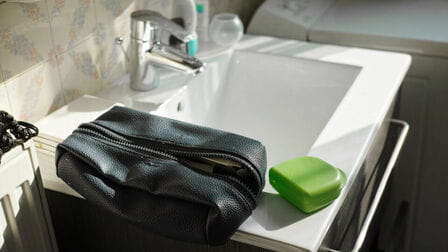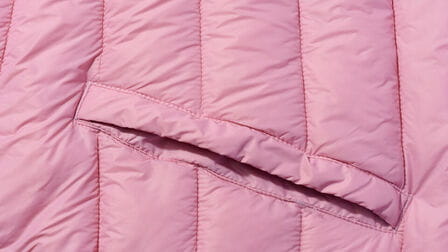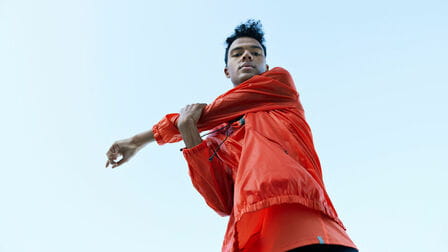Whether or not to wear an undershirt is a common dilemma, especially for men. An undershirt, also known as an A-shirt, vest, or singlet, is a sleeveless shirt worn underneath a dress shirt or other top. Here is an in-depth look at the pros and cons of wearing undershirts to help you decide if they are right for you.
Who Should Wear Undershirts?
Certain people tend to benefit more from wearing undershirts than others. Here are some situations where undershirts are recommended:
- If you sweat a lot, an undershirt can help absorb sweat and prevent stains on your nice dress shirt. It creates an extra layer between you and the dress shirt.
- Undershirts can minimize the appearance of chest hair under a dress shirt. The extra layer camouflages the hair beneath.
- If you wear a lot of cheap, thin, or light-colored dress shirts that are prone to showing nipples or chest hair, an undershirt provides coverage.
- Some work uniforms require undershirts as part of the dress code. Law enforcement and military personnel often must wear undershirts under their uniforms.
- Undershirts add warmth. If you work in a cold environment or tend to feel chilly, the extra layer helps maintain body heat.
- Undershirts can protect your skin from Getting irritated by coarse, scratchy dress shirt material. The extra layer minimizes irritation.
So in summary, people who sweat a lot, have abundant chest hair, need to cover their nipples, work in cold environments, have uniforms requirements, or get skin irritation should consider wearing undershirts more often.
How to Choose and Wear Undershirts
If you decide to wear undershirts, proper fit and care is important:
Material
- Cotton or moisture-wicking synthetic fabrics work best. Avoid thick, bulky materials.
- Lightweight materials allow more breathability on hot days.

Fit
- Size appropriately - too loose adds bulk, too tight shows through the dress shirt.
- Crew neck provides the most coverage around the neckline.
- Sleeveless (tank) style provides the most discreet underlayer.
Care
- Wash frequently and use antimicrobial detergent to prevent odors.
- Replace undershirts periodically as they lose shape and get stretched out.
- Remove visible stains promptly before they set.

Wearing
- Ensure the neckline remains hidden under the collar of your dress shirt.
- Keep undershirt tucked in to avoid bunching up.
- Layer a v-neck sweater over a crew neck undershirt to avoid exposing the undershirt.
Choosing the right material, fit, and care routine helps maximize the benefits of wearing an undershirt. Wearing it properly under your dress shirt keeps it hidden from view.
Pros of Wearing Undershirts
Here are some of the main benefits of wearing an undershirt:
Odor Control
The extra layer helps absorb sweat and body oils before they reach your dress shirt. This reduces odors and minimizes the need for frequent dress shirt washing.
Extends Time Between Dry Cleaning
By absorbing sweat and oils, undershirts allow dress shirts to remain clean looking and smelling fresh longer between washing. This saves time and money on dry cleaning bills.
Reduces Deodorant Stains
White deodorant stains on dress shirts are common. An undershirt prevents the deodorant from transferring directly onto the dress shirt fabric.
Provides Warmth
The extra layer provides insulation to retain body heat. This makes undershirts ideal for chilly offices and winter weather.
Smoother Appearance
Undershirts minimize the appearance of protruding nipples and chest hair under dress shirts. The results is a flattering, clean, smooth look.
Prevents Chafing
For people with sensitive skin, undershirts create a barrier between skin and coarse dress shirt fabrics. This reduces irritation, abrasion and chafing.
Absorbs Sweat
People who sweat heavily benefit from the extra sweat absorption capacity of undershirts. The sweat gets locked into the undershirt rather than staining the dress shirt.
In summary, the moisture wicking properties of undershirts promote freshness, extend time between washings, and create a neat appearance under dress shirts.
Cons of Wearing Undershirts
However, there are also some potential drawbacks to consider:
Added Bulk
Undershirts add an extra layer of material and thickness under your dress shirt. This can feel bulky, especially in hot weather.
Extra Laundry
Having to launder additional undershirts increases time spent doing laundry as well as water and energy usage.
Visible Undershirt Lines
A crew neck undershirt may be visible beneath an open collar dress shirt. V-neck undershirts help avoid this problem.
Heat Trapping
The extra layer can cause you to get hotter in warm weather or hot environments. Sweat gets trapped rather than absorbed and wicked away.
Restricted Range of Motion
Some people dislike the feeling of a snug fitting undershirt under their clothing, finding it restrictive.
Cost
Quality undershirts, especially performance fabrics with moisture wicking, cost more than basic t-shirts. Ongoing replacement adds up.
Skin Irritation
For sensitive individuals, certain fabrics like wool can cause skin irritation, itching or allergic reactions.
While undershirts provide odor and sweat control, the extra bulk, cost, laundry, and potential overheating are disadvantages to weigh. Overall comfort should determine your personal choice.
Alternatives to Wearing Undershirts
Some alternatives to consider:
High Performance Dress Shirts
Modern synthetic dress shirts with moisture wicking fabrics provide sweat control without an undershirt. Brands like Ministry of Supply offer these technical dress shirts.
Dress Shirt Shields
Adhesive cloth patches applied to the underarms of a dress shirt absorb sweat and odor. No extra layer needed. Brands like Sweatblock and Thompson Tee make these.
Clinical Strength Antiperspirant
Clinical strength deodorants/antiperspirants dramatically reduce underarm wetness and body odor. Wearing alone may preclude the need for an undershirt for some people.
Botox Injections
Botox injections block the signals from the nerves that stimulate the sweat glands. Treatment lasts months and significantly reduces underarm sweating.
MiracleAir Undershirt
This brand makes ultra-thin mesh undershirts that feel almost weightless. Great for breathability while providing moisture protection.
FreshBody Undershirt
This uses activated carbon fibers woven into the fabric to absorb odor. No heavy moisture pads needed. Odor protection without bulk.
Experiment with these alternatives to traditional undershirts. Find the right option that provides protection and breathability without bulk and irritation.
Step-by-Step Guide to Wearing Undershirts Properly
Follow these steps for optimal results when wearing undershirts:
Step 1: Choose Appropriate Undershirt Fabric and Style
Select lightweight cotton, linen or synthetic moisture wicking fabric. Crew and V-neck tanks work best under dress shirts.
Step 2: Ensure Proper Fit
Fit snugly but not too tight. Size up if undershirt shows through dress shirt or constricts movement.
Step 3: Put on Undershirt Before Dress Shirt
Pull undershirt on first so it sits smoothly against your skin before adding dress shirt.
Step 4: Tuck in Undershirt
Keep undershirt neatly tucked into your pants to prevent bunching up under dress shirt.
Step 5: Check Visibility of Undershirt Edge
Be sure undershirt neckline isn't visible above dress shirt collar. Pop collar helps hide.
Step 6: Fasten Buttons on Dress Shirt
Buttoning keeps undershirt laying flat. Unbuttoned can allow undershirt to slip.
Step 7: Adjust Undershirt as Needed
If undershirt bunches during wear, discretely smooth it down to remain tucked in.
Following these tips ensures your undershirt provides sweat and odor protection without being visible under dress shirts.
Tips for Getting the Most from Your Undershirts
Here are some additional pointers:
- Wash frequently using antimicrobial detergent to prevent odor buildup.
- Replace every 6-12 months as undershirts lose shape and absorbency over time.
- Alternate between two or more in rotation for best results.
- Carry a spare while traveling in case of sweat-outs or spills.
- For workouts, choose technical fabrics that wick moisture away from skin.
- Try different styles and fabrics - choose what provides the best balance of moisture absorption and comfort.
- Use dress shirt shields or gel patches for extra protection on high heat and humidity days.
- If chafing occurs, apply petroleum jelly or anti-chafe balm on trouble spots.
- Shave or trim chest hair for smoother appearance under dress shirts.
- If wearing an open collar, pop the points of the collar to conceal undershirt.
- Stay well hydrated - drink plenty of water to help reduce excessive sweating.
Shopping for high quality moisture wicking undershirts and wearing them properly makes them a useful wardrobe addition for many men.
Conclusion
In summary, the choice of wearing undershirts revolves around personal factors like your sweat levels, dress code, climate, and sensitivity to fabrics. When worn properly, moisture-wicking undershirts can promote freshness and a neat appearance under dress shirts without excessive bulk. But the extra laundry and heat retention can be disadvantages for some to consider. With the right expectations and alternatives available today, decide what works best for your individual needs.














